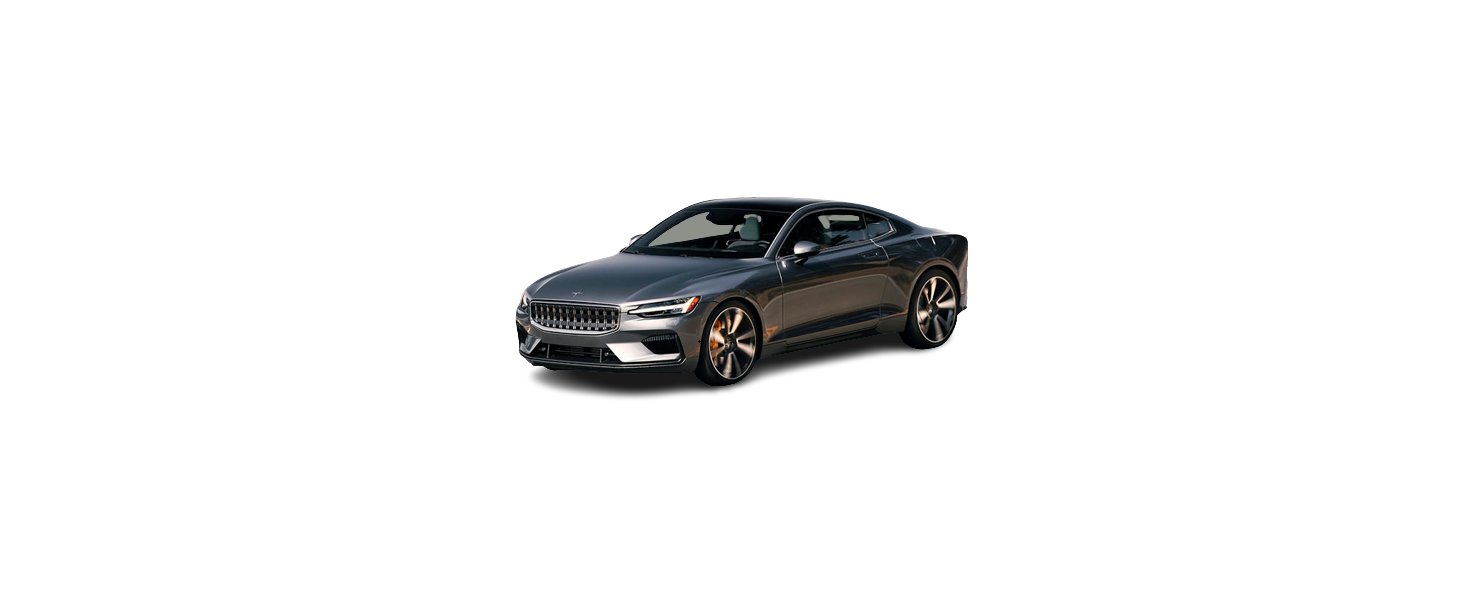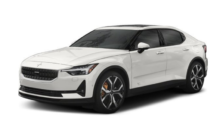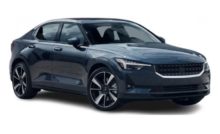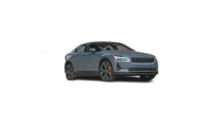Note that certain accessories may also drain power from the electrical system. Do not use functions that use a lot of electrical current when the engine is turned off. Examples of such functions are:
- blower
- headlights
- windshield wipers
- audio system (especially at high volume).
If the starter battery voltage is low, a message is shown in the driver display. The vehicle’s energy-saving function will then turn off or reduce certain functions, such as the blower and/or the audio system.
- Charge the battery by starting the engine and let it run for at least 15 minutes (driving charges the battery faster than letting the engine idle).
Braking on salted roads
This could increase stopping distance. Maintain an extra large safety distance to the vehicle ahead. Make sure to also:
- Apply the brakes from time to time to help remove salt. Make sure braking does not pose a risk to any other road users.
- Gently apply the brakes when you have finished driving and before driving again.
Braking on wet roads
This may also occur after washing the vehicle. It will then be necessary to apply greater pressure to the brake pedal. You should therefore maintain a greater distance to the vehicle ahead.
Firmly apply the brakes after washing the vehicle or driving on wet roads. This helps warm up the brake discs, enabling them to dry more quickly and protecting them against corrosion. Consider the current traffic situation when braking.
Driving through standing water
- Do not drive in water higher than the floor of the vehicle. If possible, check the depth of the water at its deepest point before driving through it. Be particularly careful when driving through flowing water.
- Do not drive faster than walking speed.
- Do not stop the vehicle in the water. Drive carefully forward or back the vehicle out of the water.
- Remember that waves created by passing vehicles could cause the water level to rise above the vehicle’s floor level.
- Avoid driving through salt water to help avoid the risk of corrosion.
Because it can be difficult to determine the water depth, Polestar recommends not driving through standing or running water. The driver is always responsible for operating the vehicle in a safe manner and adhering to all applicable laws and regulations.
When you have passed the water, press lightly on the brake pedal and check that the brakes are functioning properly. Water, mud, slush, etc. can make the brake linings slippery, resulting in delayed braking effect.
Economical driving
Before driving
- Whenever possible, precondition the vehicle before driving by connecting the charging cable to an electrical outlet.
- If preconditioning is not possible when it is cold outside, use seat and steering wheel heating first. Avoid heating the entire passenger compartment to reduce the amount of current being taken from the hybrid battery.
- The type of tires and inflation pressure used could affect energy consumption – consult Polestar Customer Support for advice on suitable tires.
- Remove unnecessary items from the vehicle – the heavier the load, the higher the fuel consumption.
While driving
- Activating drive mode Pure.
- Activate the Hold function at higher speeds during journeys that are longer than the range of the electricity.
- Whenever possible, avoid using the Charge function to charge the hybrid battery.
- Maintain a steady speed and a generous following distance to traffic ahead to minimize braking.
- The hybrid battery is recharged during light braking using the brake pedal.
- Higher speeds increase energy consumption because air resistance increases with speed.
- In a cold climate, reduce heating of the windshield/rear window, mirrors, seats and the steering wheel.
- Avoid driving with the windows open.
- Do not use the accelerator pedal to keep the vehicle stationary on an uphill gradient. Instead, activate the braking function at a standstill.
- If possible, turn off the climate system when driving shorter distances after preconditioning.
After driving
- If possible, park in a climate-controlled garage with vehicle charging outlets or stations.
Electric driving range
The certified value for the distance that can be driven should not be considered an expected driving range. The certified value should primarily be used to compare the results of different vehicles obtained in special test cycles.
Range in instrument panel
When the vehicle leaves the factory, or after a factory reset, range is based on the certified value
After the vehicle has been driven for a period of time, range will be based on historic driving patterns. The amount of history used depends on the battery’s level of charge. The range therefore adapts more quickly to changed driving patterns the less charge there is in the battery.
Factors affecting driving range
In addition to historical trip data, there are several other factors that affect range. The longest range is achieved under very favorable conditions when all factors positively influence range.
Examples of factors that affect range:
- speed
- climate control settings
- topography
- preconditioning
- tires and tire pressure
- the current traffic situation
- temperature and weather
- road conditions.
Range based on speed and ambient temperature
The graph shows the approximate relationship between constant speed and driving range. Driving at a lower constant speed helps increase the electric motor’s driving range.
Higher ambient temperature and deactivated climate system are also more favorable for range.
Hill Start Assist
- The function for assisting when starting the vehicle on inclines (HSA) helps prevent the vehicle from rolling backward when starting on an uphill gradient. When backing up a hill, HSA helps prevent the vehicle from rolling forward.
- The function retains pressure from the brake pedal in the brake system for several seconds after the brake pedal has been released.
- This temporary braking effect is released after a few seconds or when the driver begins driving.
- Hill Start Assist is available even when the Auto-hold brake function is switched off.
Overheating of engine and transmission
- Engine power may be temporarily limited.
- Remove any auxiliary lights mounted in front of the grille when driving in hot weather.
- If the temperature in the engine’s cooling system becomes too high, a warning symbol will appear in the instrument panel along with the message Engine temperatureHigh temperature Stop safely. Pull over to a safe location and let the engine idle for a few minutes to cool down.
- If the message Engine temperatureHigh temperature Turn off engineor Engine coolantLevel low, turn off engine is displayed, stop the vehicle and turn off the engine.
- If the transmission begins to overheat, an alternative gear shifting program will be selected. An integrated protective function will also be activated, the warning symbol will illuminate and the message Transmission warmReduce speed to lower temperatureor Transmission hotStop safely, wait for cooling will be displayed in the instrument panel. Follow the recommendations given by reducing speed or stopping the vehicle safely and letting the engine idle for a few minutes to let the transmission cool.
- If the vehicle begins to overheat, the air conditioning may be temporarily switched off.
- After a prolonged period of driving in demanding conditions, do not turn off the engine immediately after stopping.
It is normal for the engine’s cooling fan to operate for a short time after the engine is switched off.
Symbols in the instrument panel
| Symbol | Meaning |
|---|---|
| | High engine temperature. Follow the recommendations provided. |
| | Low coolant level. Follow the recommendations provided. |
| | Transmission hot/overheated/cooling. Follow the recommendations provided. |
Parking on a hill
Always apply the parking brake when parking on an incline. Selecting a gear or P position may not be sufficient to keep the vehicle stationary in all situations.
If the vehicle is pointing uphill:
- Turn the front wheels so they are pointing away from the curb.
If the vehicle is pointing downhill:
- Turn the front wheels so they are pointing toward the curb.
Heavy load uphill
Heavy loads could cause the vehicle to roll backward when the parking brake is released automatically on steep uphill gradients. To help avoid this, pull the control upward while you are driving away. Release the control when the vehicle gains traction.
Preparing for a long trip
Check that
- the engine is running properly and that fuel consumption is normal
- there are no leaks (fuel, oil or other fluid)
- the brake pedal is functioning properly
- tire tread depth and air pressure are at correct levels. Change to snow tires when driving in areas where there is a risk of snowy or icy roads
- the start battery is sufficiently charged
- the wiper blades are in good condition
It could also be a good idea to make sure the maps in the navigation system are up to date, and to check requirements for vehicle loads, ferries, car trains, etc.
Keep in mind that data roaming charges may apply if the vehicle is connected to the Internet while in another country or service area.
Service stations
Towing using a towline
Towing another vehicle
Towing another vehicle requires a lot of power – use the Constant AWD drive mode. This helps charge the hybrid battery and improve the vehicle’s driving and roadholding characteristics.
Before towing another vehicle, check applicable speed limit regulations.
Jump starting
Never attempt to tow the vehicle to start the engine as this could damage the electric motors. Use an auxiliary battery if the start battery’s charge level is so low that the engine cannot be started.
Attempts to tow-start the vehicle could cause damage to the electrical drive motors and three-way catalytic converter.
Winter driving
Before the cold season arrives:
- Make sure the engine coolant contains 50% antifreeze. This mixture helps protect the engine from frost erosion down to approx. –35 °C (–31 °F). Do not mix different types of antifreeze as this could pose a health risk.
- Keep the fuel tank well filled to prevent condensation from forming.
- Check the viscosity of the engine oil. Oil with low viscosity (thinner oil) improves cold-weather starting and reduces fuel consumption when driving with a cold engine.
- Check the condition and charge level of the start battery. Cold weather places greater demands on the start battery and reduces its capacity.
- Use washer fluid containing antifreeze to help prevent ice from forming in the washer fluid reservoir.
See separate section for engine oil recommendations.
Slippery driving conditions
To help optimize traction and roadholding, Polestar recommends using snow tires on all wheels whenever there is a risk of snow or ice on the road.
- Certain countries require use of winter tires by law. Not all countries permit the use of studded tires.
- Practice driving on slippery surfaces under controlled conditions to learn how the vehicle reacts.





